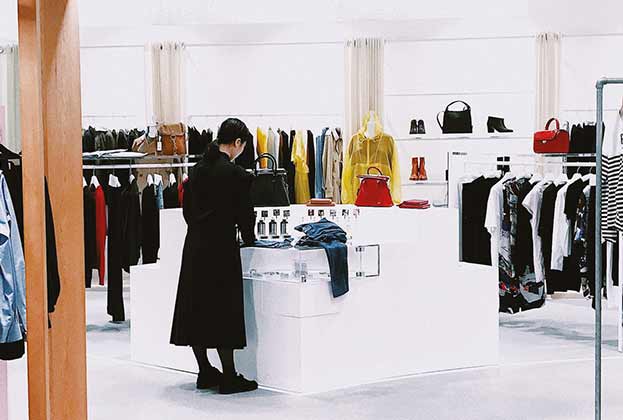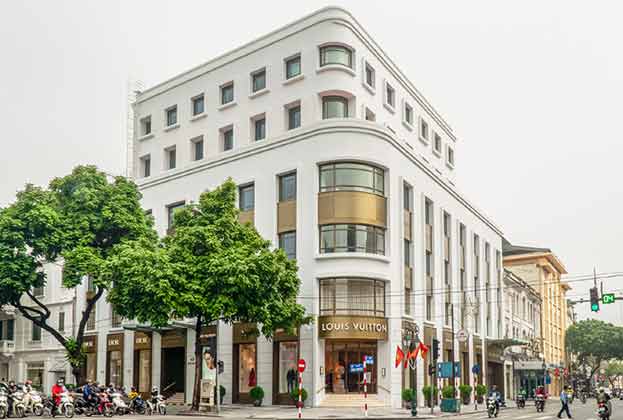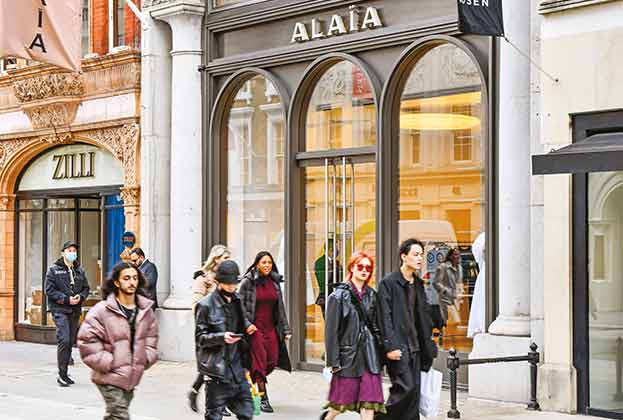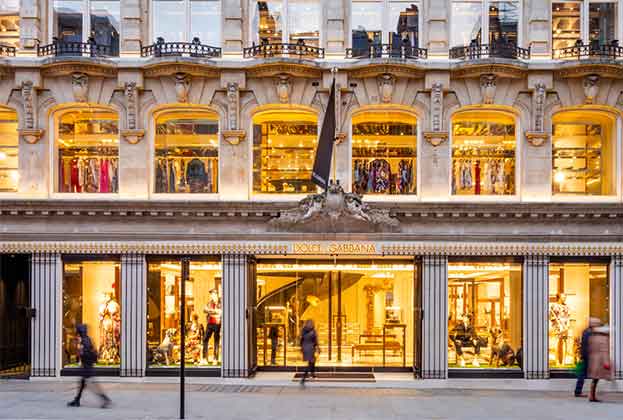Drawing on recent trends we provide our outlook for luxury demand and what this could mean for rents going forward across key regional markets
New store openings to remain focused on key domestic markets for the remainder of 2022
We expect the rationalisation of store footprints in mature markets to continue to slow, with global footprints likely to expand driven by new store activity in large domestic driven markets in China and the US. In China, its top tier cities will be a top priority. However, it will be those emerging cities beyond the top tier that are likely to provide more opportunities as will emerging markets in the wider region. The Middle East will also move up the agenda as brands continue to explore the opportunity for directly owned stores.
However, over the short term, this activity may be more subdued than that seen in 2021 due to new Covid-19 uncertainty and inflationary pressures, issues we explore in more detail later in this report.
International destination markets to move up the agenda as we move into 2023 and the recovery in international travel gathers pace
Current forecasts from Tourism Economics suggest that global international air passenger numbers will not return to pre-Covid-19 levels until 2025. This masks major regional differences with Europe and North America forecast to see a faster recovery with a return to pre-Covid-19 levels in 2024. In contrast, cross border arrivals in the Asia Pacific region are not expected to return to pre-Covid-19 levels before 2025 as China's outbound tourism, the major source market for the region, remains restricted.
This recovery trajectory suggests that key destination markets in Europe and North America could see a further resurgence in requirements from luxury brands as we move into 2023.
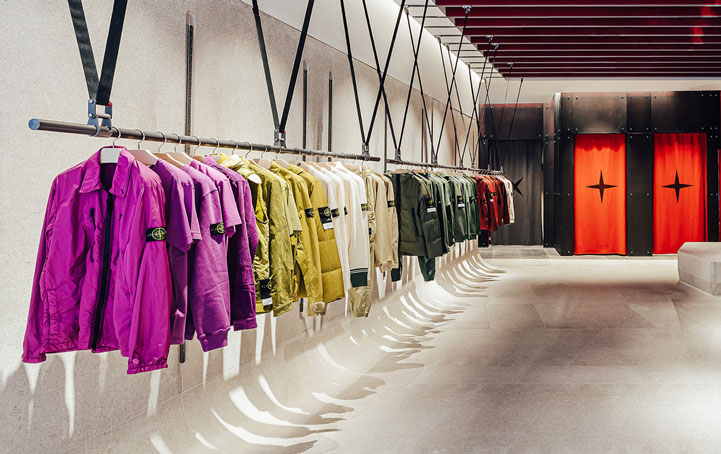
Examining the fundamentals of destination markets will be key to prioritising opportunities
While the pandemic had an unprecedented impact on luxury destination retail markets, the fundamentals that made markets attractive have not changed significantly, assuming a return to pre-Covid-19 international travel trends. This is evidenced in our Luxury City fundamentals ranking.
New York and London continue to top the ranking, a reflection of their size, international visitor appeal and relative affluence of their residents. For example, these two cities have the highest number of ultra-high net worth individuals (UHNWI*) resident.
Beyond the top two, the ranking is dominated by Asian cities. China has two of its top tier cities featuring in the global top 10, Shanghai and Beijing. This aligns with the importance of Chinese consumers to the global luxury personal goods market, with 21% of sales last year taking place in China, bolstered by last year’s travel restrictions. Bain & Company forecast that the repatriation of Chinese luxury spend will continue even once travel reopens, suggesting that China will be the world’s largest luxury goods market by 2025. As a result, the appeal of China for store expansion is likely to intensify.
The luxury city ranking is based purely on quantitative metrics and does not consider cultural or reputational factors. This is apparent in Paris ranking below Shanghai and Milan not featuring in the top 10. As both cities are home to several luxury groups and brands, they are major destination markets for international luxury consumers, therefore remain key markets for brand presence.
Key cities of note beyond the global top 10
Beyond the top 10, there are several cities that are worth highlighting in regard to their wider region. In Asia, Osaka and Shenzhen fell just outside the top 10, ranking 11th and 12th, respectively, with the latter having some of the strongest growth prospects globally. Key emerging markets in the region include Jakarta (17th) and Mumbai (22nd), both having large retail markets, with Jakarta having more UHNWI than several European cities.
Istanbul and Milan ranked highly in their respective European region despite not making the global top 10. In the case of North America, San Francisco and Miami are worth highlighting due to their relatively large affluent populations, and, in the case of Miami, its international appeal. Whereas in the Middle East, Dubai remains the highest-ranking city, followed by Riyadh in Saudi Arabia.
What does this mean for rents going forward?
On the whole prime retail rents in core luxury areas have shown a greater degree of resilience to the impacts of the pandemic compared to mass-market retail locations. Despite this, for those luxury destinations more dependent on international tourism we have seen some degree of rental softening. For example, London’s Bond Street saw indicative prime headline rents decline 16.7% between Q4 2019 and Q3 2021. For those other markets in Europe that saw declines over the same period, the average fall was -18.3%. However, half of the European luxury streets we track reported no change in prime headline rents.
Hong Kong, heavily reliant on Chinese tourism, also saw prime headline rents in its most desirable luxury area decline 50% between Q4 2018 and Q3 2021.
In contrast, large, domestic driven luxury markets, namely in the US and China, have reported headline rents in line, or above, pre-pandemic levels. In Shanghai, for example, Q3 2021 prime headline rents in its premier luxury area of Nanjing Road West were in line with Q4 2019 levels.
While rental levels will not determine the attractiveness of a market for store acquisitions, for those cities that have seen a softening in rents and/or increased landlord incentives, there could be a potential opportunity for expansive luxury brands.
In terms of rental outlook, we expect to see the return of rental growth in Europe in 2022/23, supported in part by a return in international visitors. In Asia, beyond China, where we have seen rental declines in response to the pandemic, the recovery is likely to take longer as travel within the region is expected to see a slower revival than that in Europe.
But, there are short-term headwinds to watch out for
2021 did surprise on the upside with global luxury personal goods spend and profitability recovering to 2019 levels according to Bain & Company, which was reflected in some very healthy results from a number of luxury groups. While the medium-term outlook for personal luxury goods spend remains positive, there may be some short-term headwinds. These headwinds could temper spend growth and with it brand confidence to open new stores. In turn, this may mitigate rental growth expectations.
So, what are these headwinds? In China there has been a recent surge in Covid cases, meaning the return of domestic travel restrictions and local lockdowns, which will undoubtedly have an impact on luxury spend. In addition, global inflationary pressures could dampen luxury spend and brands’ profit margins. All of which could slow new store acquisitions. Likewise, supply chain issues may also temper confidence and the ability to open new stores over the short term. In the case of inflation, however, this should be relatively short-lived. Oxford Economics forecasts that global inflation will peak at 7.2% in 2022 before returning to more normal levels in 2023 to average 2.9% per annum through to 2025.
Despite these headwinds, and growing upside risk around these, we still believe the fundamentals for growth over the medium term remain positive. This is supported by forecasts for economic growth, which is closely correlated to luxury spend historically. For example, global GDP is still forecast to expand by 3.4% in 2022, and while it will slow to 3.2% in 2023 and 2024, this will still outperform 2019 GDP growth.
Looking further ahead, and from a store perspective, the biggest question is around the growth in online and what this means for physical luxury retail. The pandemic accelerated the growth in online but the majority of sales in 2021 (c.78%) continued to take place in-store, with a growing share of this transacted in monobrand stores. This highlights the ongoing importance of the store in raising brand profile and delivering a 'luxury' experience, also to the benefit of online sales. Likewise, the evolution of the metaverse as a route to deliver new income streams and engage with younger consumers, will also have a basis in the physical.
While stores will continue to be a fundamental element of the luxury experience, we could start to see a marked divergence in strategies across different geographies globally. In large domestic driven markets for example, such as the US and China, we expect to see increased activity in relatively under-served markets but where the fundamentals in terms of size and affluence are robust. Likewise, domestic resort markets in these countries will also move up the agenda. However, the appeal and importance of core destination luxury markets globally, and their premier luxury areas, remain unchanged.
Read the other articles within this publication below
.jpg)
